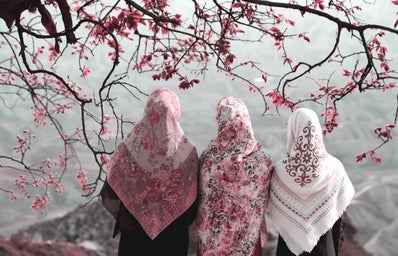“Forcing a woman to wear a hijab is wrong. Just like forcing her to take it off is wrong. It’s HER choice.” – Najwa Zebian.
The lack of understanding of Muslim traditions and their purpose has led many Western countries – particularly those in Europe – to turn their ignorance into legislation. The controvercial hijab ban not only exemplifies this issue, but is synonymous with the violation of women’s rights, freedom of expression, and religion.
Countries such as France, the Netherlands, Denmark, Austria, Bulgaria, and recently Sri Lanka all have in place full or partial bans on wearing the Hijab in public. These laws negatively affect Muslim women, who are forced to choose between staying true to their religious identity and their career; between their comfort and discriminatory state legislation.
In France, the burqa ban impliments two consequences: a €150 fine (which is more than a fine for not wearing a mask – €135) or a requirement to take a class on the meaning of citizenship, and sometimes both. The punishments are meant to inform fully-veiled women about “French citizenship” and “the values of the French republic”.
Why?
There are a plethora of reasons for the oppressive ban. Firstly, conservative, right-wing political parties propose many of these bans to secure right-wing votes. For instance, in France, the far-right leader Marine Le Pen proposed a nationwide ban on the hijab in public places. Similarly, in Switzerland, the proposal to ban face coverings in public was put forth by the right-wing Swiss People’s Party (SVP). Evidently, xenophobic actions become a way for the far-right groups in these countries to gain political clout.
The hijab ban also serves as a political distraction from issues such as rising unemployment or inaccessible healthcare. Creating problems to mask existing problems is a commonly used political tactic that usually occurs at the expense of a misunderstood minority group – in this instance, Muslim women.
Another reason for the ban includes the supposed threat to national security (this is the reasoning for the hijab ban in Sri Lanka). However, this reasoning lacks sufficient supporting data. There is no proof that citizens are under more threat from people wearing niqabs as a disguise. In fact, more violent crimes and terrorist activity happen with the perpetrator in full view. To this end, wouldn’t ostracizing a community and giving them a reason to rebel against discriminatory practices be considered more of a national security threat?
Moreover, the most ignorant reasoning for the ban is the perception that the hijab is a symbol of oppression and extremism. A quick Google search or reference to the Islamic religious text would reveal the significance of the hijab.
What does the hijab stand for?
The hijab is a headscarf, usually covering a woman’s head and neck. It is worn by many Muslim women around the world. It is a commandment by God for the purposes listed below – not for the purpose of oppression.
The hijab represents a woman’s connection with her faith, and signals respect for her creator, Allah. It is also believed that wearing the hijab liberates women from the vain desire to show off their beauty and compete with other women around them, as well as protecting women against inappropriate gazes.
In addition, during the time of colonialism, the hijab became a symbol of national identity, independence, and opposition to the West after French and British colonizers in Algeria, North Africa, and the Middle East forced Muslim women to remove the hijab and emulate European women and values.
Wider Implications and Inferences
The hijab ban reveals several disturbing truths and effects.
-
The ban is a threat to third-wave feminism, which holds that women should choose which practices are best for them without emulating or contending with anybody else’s expectations. Liberation does not equal an uncovered head. Liberation equals freedom of choice.
-
The ban is a form of neo-colonialism. It follows the premise of white supremacy in that anything deemed non-Western is oppressive, unnecessary, dangerous. This is exemplified clearly by French Education Minister Jean-Michel Blanque’s statement that wearing a hijab was “not desirable in our [French] society”. The freedom of non-Western peoples and the observation of their cultures are only accepted if they are agreeable to Western standards and beauty and norms; a headscarf worn as a fashion statement is acceptable, but a headscarf worn for reasons of national identity and faith are not.
-
The way primarily European politicians perceive the hijab is uneducated and ignorant. It is clear that officials have not taken the time to understand the significance of the hijab, nor what it is truly meant to represent. Further reading and research on their part would clearly reveal that the hijab is not a tool of oppression or danger. The ignorance reveals a larger issue with governments and officials who push for the ban – namely that they are xenophobic and pose the real threat with their false and hate-filled perceptions of others.
In conclusion, most countries implementing anti-Muslim bans (such as the hijab ban) have no substantial evidence to do so. They display a lack of understanding of the Muslim faith and community, and fail to recognize that they occupy the title of ‘oppressor’ in the name of stopping ‘oppression’.



